Learn how to freeze sourdough starter to preserve it for later use. Perfect for when sourdough baking needs to go on the back burner and you still want to keep a thriving sourdough starter for future use. This is a really simple way to do it.
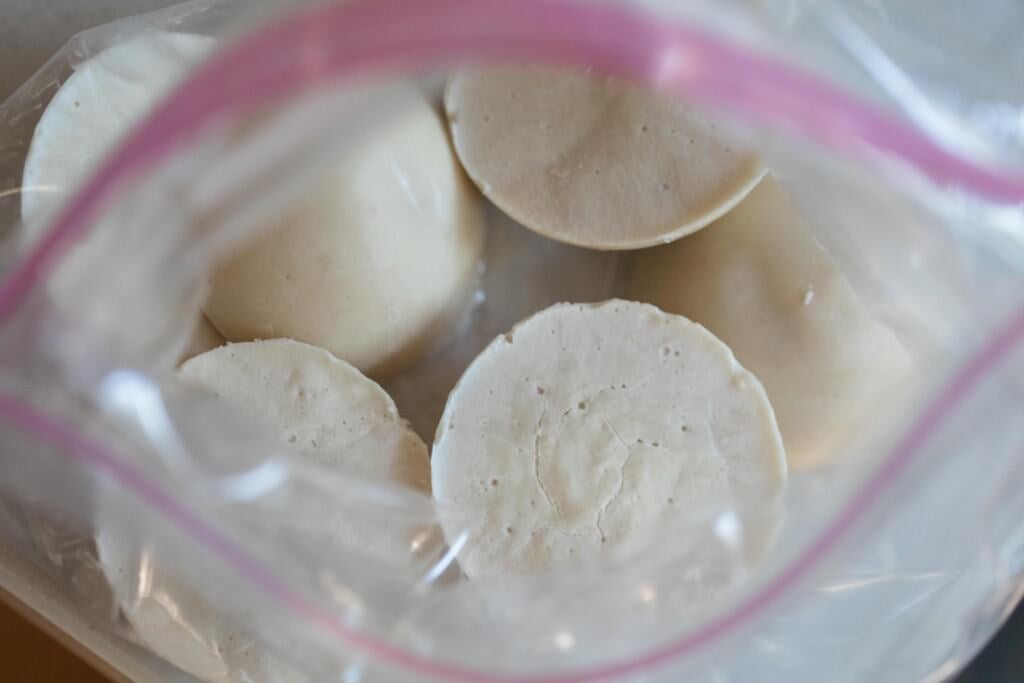
You will always find a large glass container of good sourdough starter either on my counter or in the fridge. It is something that we use constantly. From homemade sourdough bread, pizza dough, to desserts like brownies, cookies, and cakes.
But sometimes it is a good idea to have a frozen sourdough starter in the freezer just in case.
You know, just in case someone in the family knocks over the jar of starter off the counter and it crashes to the ground breaking into a million pieces and you have to somehow try to salvage it. This may or may not have happened in my house.
Or you go on a long vacation, get sick, or just life happens and you don’t have much time for weekly fresh bread or a regular feeding schedule. Or maybe you totally forget about it on the counter in the heat of the summer for a month.
Things happen, life happens.
Rather than having to start the whole process over again, having a sourdough starter in the freezer is a great way to make sure you will always have a back up.
So when you have too much starter on hand, make sure to freeze some to extend the shelf life just in case.
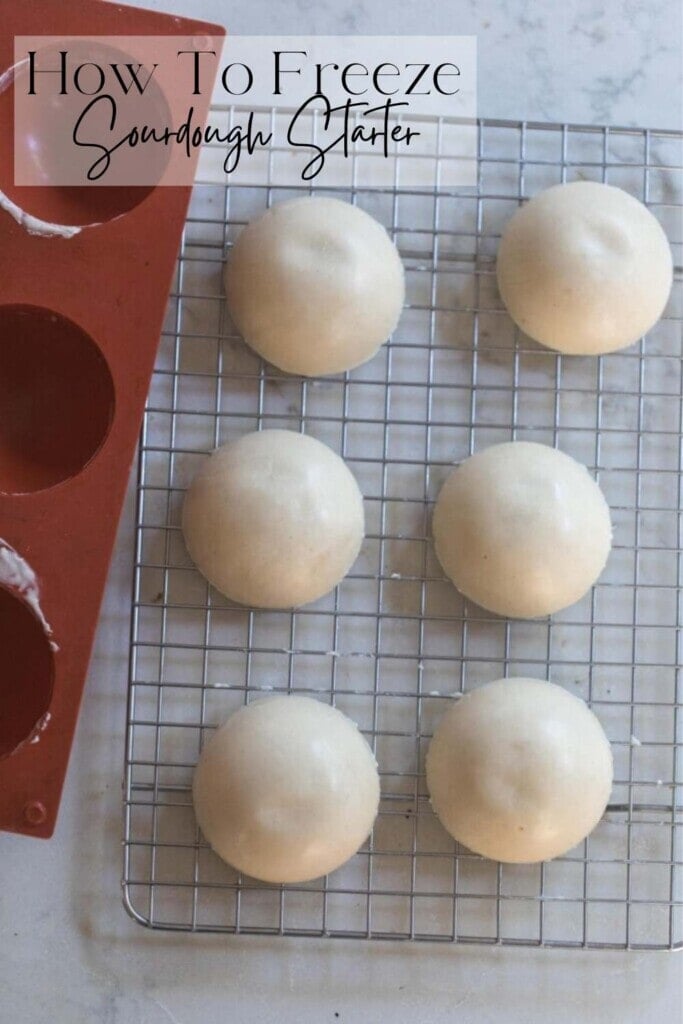
Benefits Of Freezing Sourdough Starter:
Convenience: This is such a convenient way to keep a starter for an extended period of time. It will only take a couple of days from thawing to a fresh loaf of bread.
Easy: The freezing process is super simple and takes very little hands-on time.
Perfect for emergencies: You never know what might happen, and having a backup sourdough starter in the freezer just in case is really helpful.
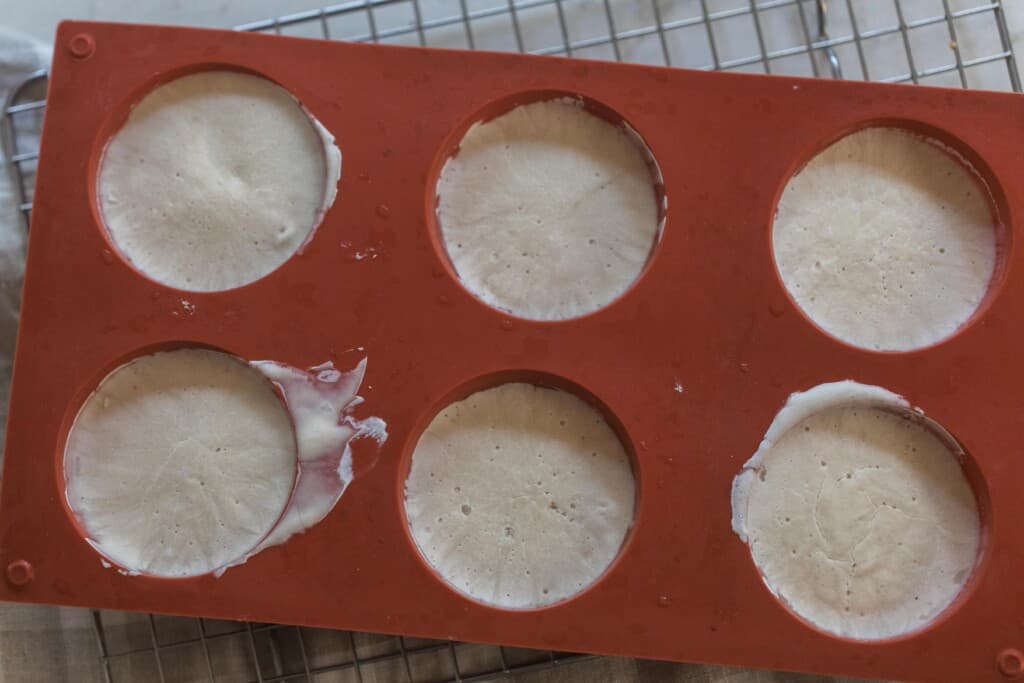
Tips:
- I like using silicone muffin cups because they are easy to pop out. You could also use regular muffin liners or even line a muffin pan with plastic wrap.
- After the sourdough starter thaws it will need to be fed a few times before it is ready for baking bread. This is because once frozen, the starter goes into a dormant state and needs to be woken up.
- While you could use discard, an active fresh starter that has been recently fed will yield the best results.
- Only freeze a mature starter. A new starter will not have enough established lactic acid bacteria and live yeast to make it healthy enough for freezing
This post contains affiliate links, which means I make a small commission at no extra cost to you. See my full disclosure here.
Tools you may need:
Glass jar like a mason jar
Silicone muffin cups or ice cube trays. For best results, I suggest using silicon so it is easy to just pop out.
Freezer safe plastic bag or airtight container: I usually like to use a ziplock freezer bag.
FAQ:
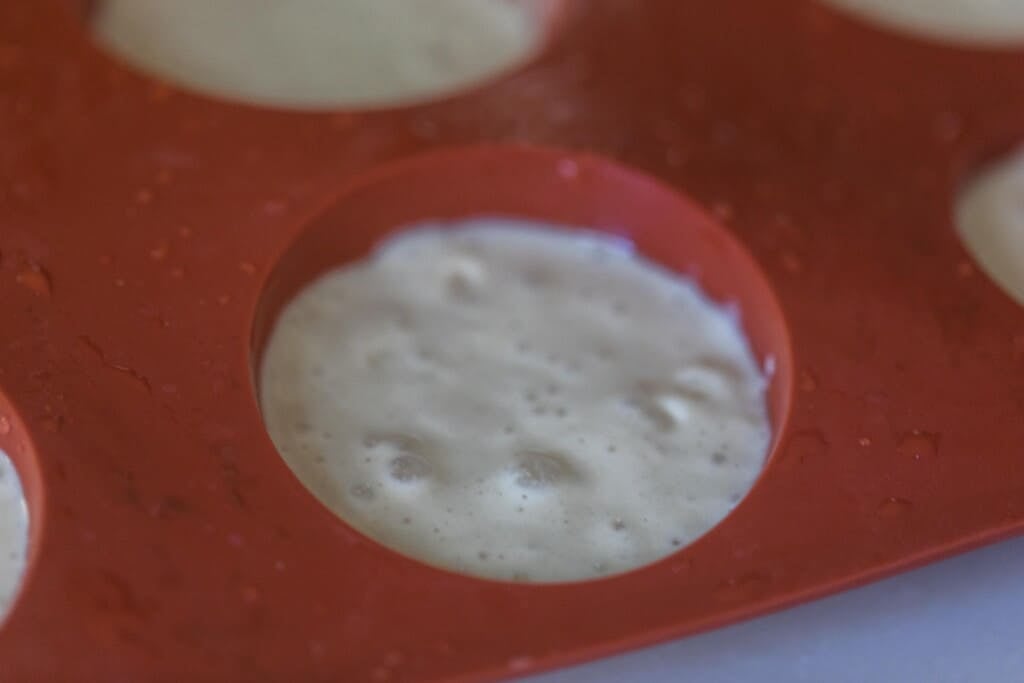
Is it better to freeze or dry sourdough starter?
Depending on how long you are planning to store your sourdough starter, drying is the best option. Frozen sourdough starter lasts about 12 months, whereas a dry starter can last years in a dry place.
Learn how to dry a sourdough starter here.
How long will sourdough starter last in the fridge?
It can last for up to two months in the fridge without feeding. With regular feeding it can last basically forever in the fridge.
Is sourdough still healthy after freezing?
Yes. While some of the yeasts die off the majority will still be living and thriving just waiting to be reactivated.
Can you freeze sourdough bread?
Yes. Sourdough bread freezes really well, and will last up to 6 months. It is a really easy process too. Just place in a freezer safe bag and pop in the freezer.
Okay, okay, there may be some other things you can do. So if you really want to see the best way to do it, check out this post.
Does freezing harm Sourdough Starter?
While some of the natural yeast will die off, the majority of the yeast is still alive, active, and unharmed. It will just go dormant in cold environments.
Once you begin to feed it, the yeast will become active and start multiplying again.
Can you freeze sourdough starter discard?
While feeding an active starter is a better idea, freezing discard will also work.
I would suggest freezing discard that has been more recently fed, it may take longer for the starter to become thriving and active after thawing.
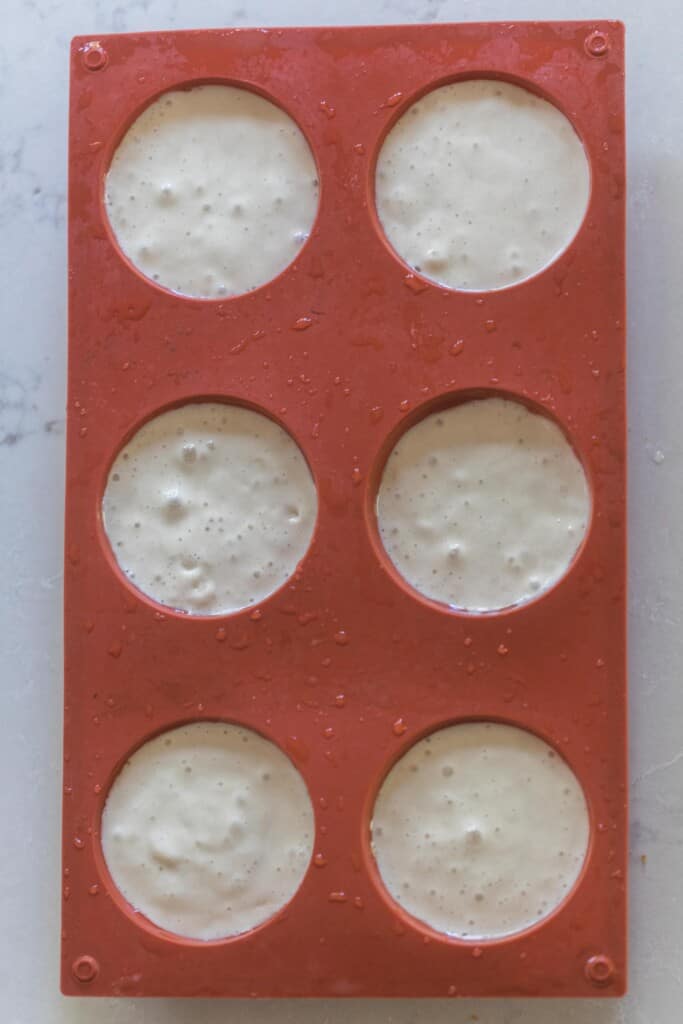
How To Freeze A Sourdough Starter:
Feed your sourdough starter.
Place in a warm spot for 4-12 hours or until active and bubbly.

Take your active sourdough starter and spoon into silicone muffin cups or ice cube tray, or even just a muffin pan lined with regular muffin liners or plastic wrap.
Freeze until completely frozen for about 3-4 hours.
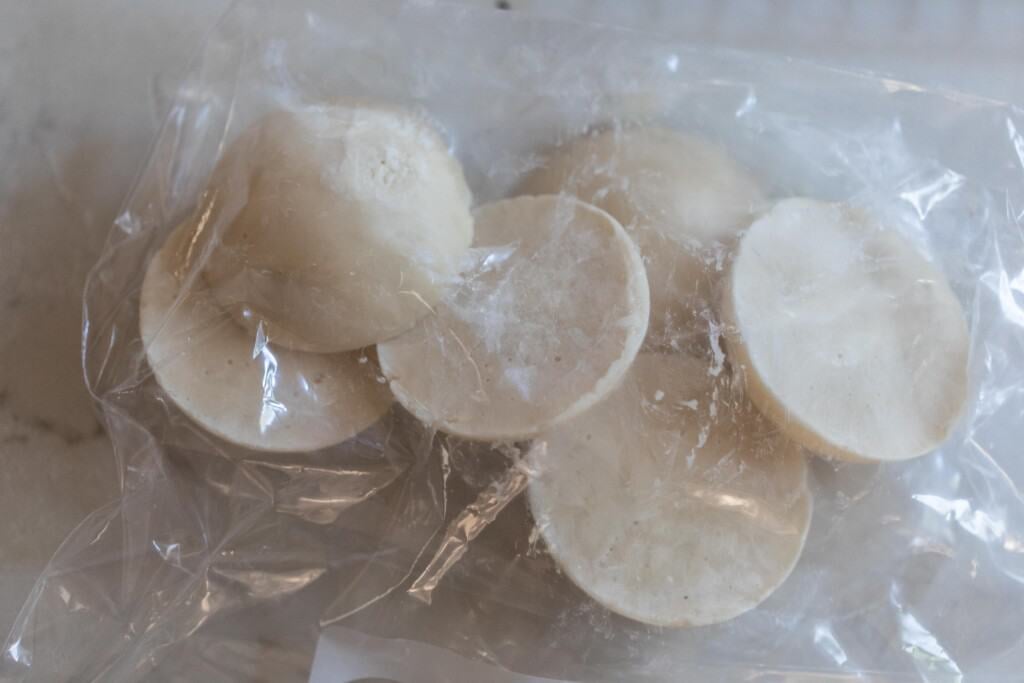
Remove the frozen sourdough starter from the mold and place in a freezer safe ziploc bag.
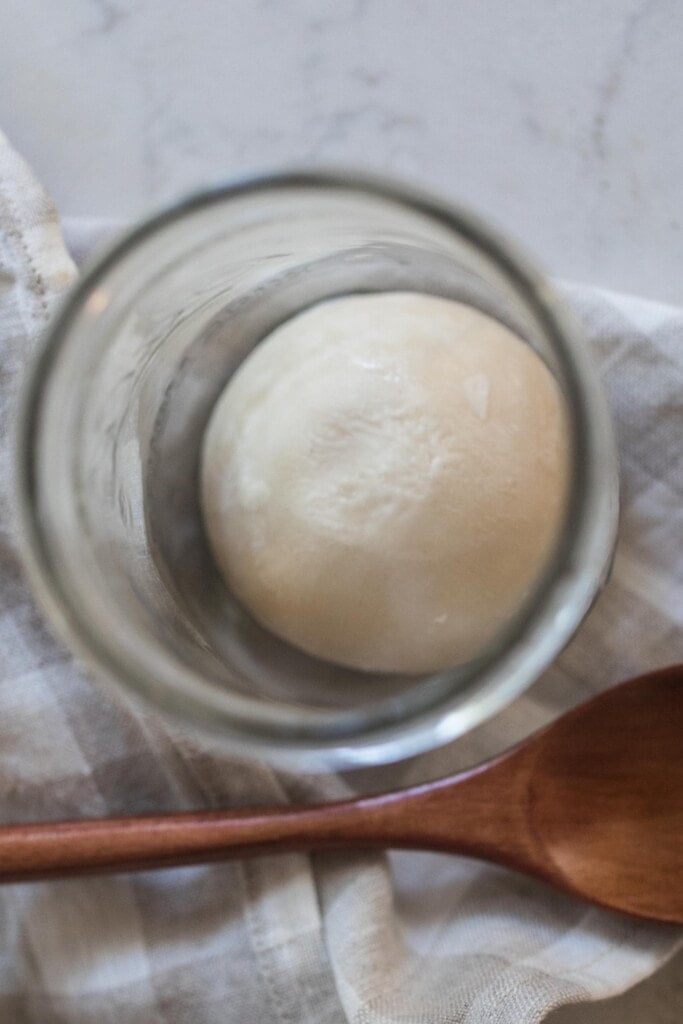
How To Thaw And Reactivate A Frozen Sourdough Starter
Place the frozen starter in a jar and let it sit at room temperature on a counter covered with a tea towel or paper towel with a rubber band.
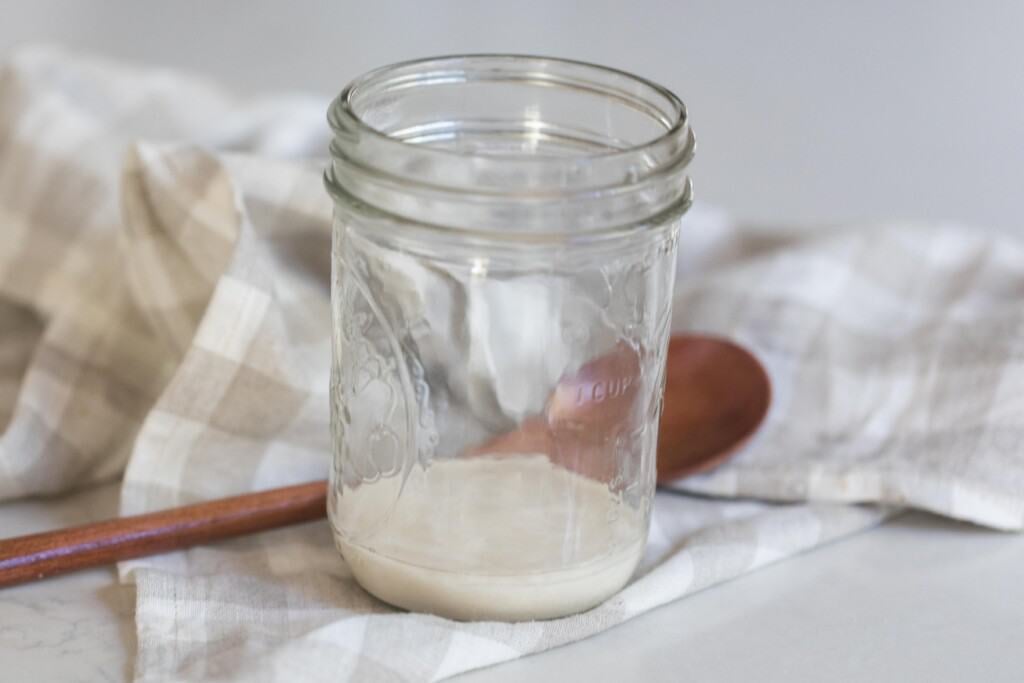
Allow to thaw for around 12 hours.
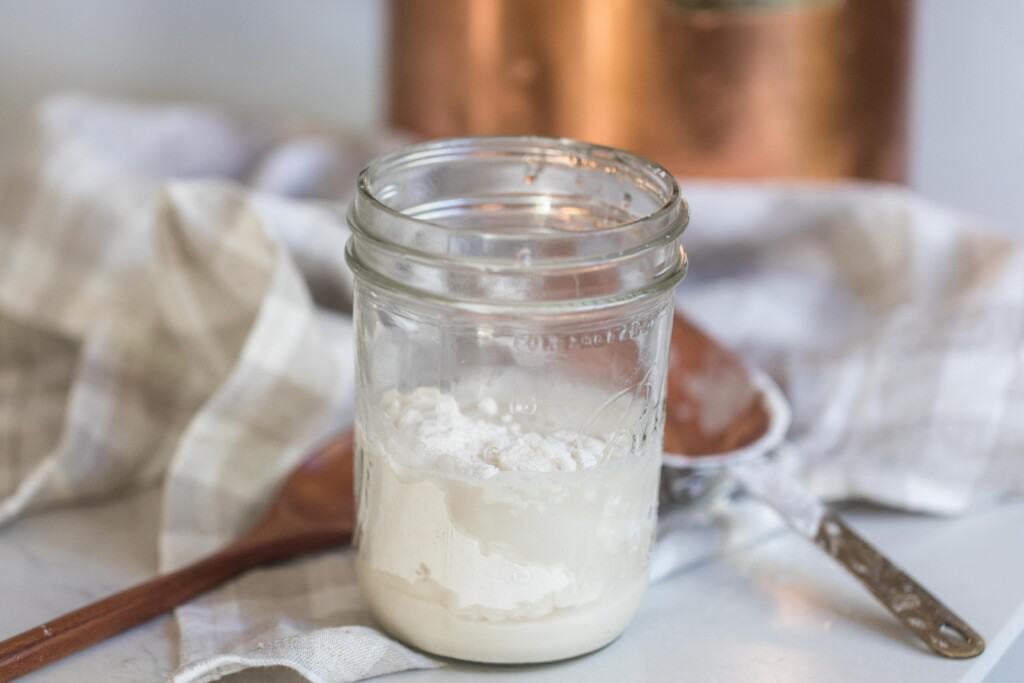
Feed equal parts flour and water. So if you froze 75 g starter: Feed it 75 g of water and 75g of flour.
Leave it for 12 hours.
Discard half of the starter and feed equal portions of flour and water. So if the amount of starter you have is about 1/4 cup after discarding, feed 2 tablespoons water and 2 tablespoons all-purpose flour.
Your sourdough starter will be ready to use once it doubles 4-12 hours after feeding. It may need a few feedings before it is really nice and active.
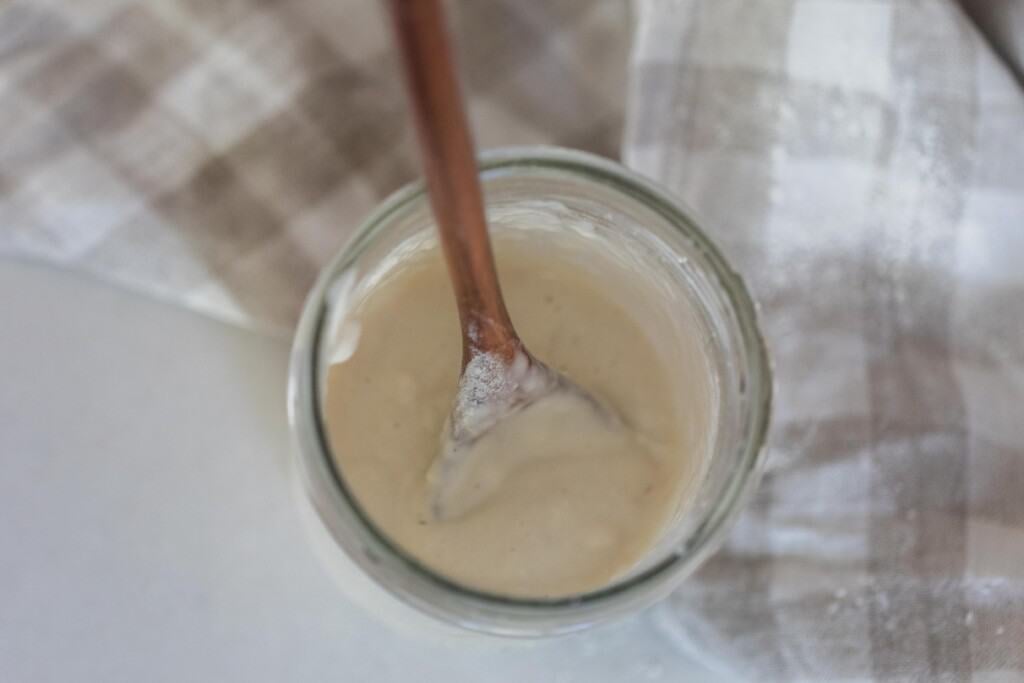
Storage:
Store in a freezer safe bag for up to 12 months.
Other ways to preserve sourdough starter: Create a dried sourdough starter. This is great for long term storage that doesn’t rely on electricity.
Find More Sourdough Recipes:
- Sourdough Stuffing Recipe. Great for failed or stale sourdough bread
- Sourdough French Toast Casserole With Apples And Raisins
- Cinnamon Crunch Bagels
- Easy Sourdough Waffles
- Blueberry Sourdough Bagels
If you try this recipe and love it, I would love if you gave it 5 stars! Thank you! Tag me on Instagram @farmhouseonboone.
Freezing Sourdough Starter

Ingredients
- Active sourdough starter
Instructions
- Feed your sourdough starter.
- Place in a warm spot for 4-12 hours or until active and bubbly.
- Take your active sourdough starter and spoon into a silicone muffin cups, ice cube tray, or even just a muffin pan lined with regular muffin liners or plastic wrap.
- Freeze until completely frozen for about 3-4 hours.
- Remove the frozen sourdough starter from the mold and place in a freezer safe ziploc bag.
- How To Thaw And Reactivate A Frozen Sourdough Starter
- Place the frozen starter in a jar and let sit at room temperature on a counter covered with a tea towel or paper towel with a rubber band.
- Allow to thaw for around 12 hours.
- Feed equal parts flour and water. So if you froze 75 g starter: Feed it 75 g of water and 75g of flour.
- Leave it at room temperature for 12 hours.
- Discard half of the starter and feed equal portions of flour and water. So if the amount of starter you have is about 1/4 cup after discarding, feed 2 tablespoons water and 2 tablespoons all-purpose flour.
- Your sourdough starter will be ready to use once it doubles 4-12 hours after feeding.
- It may need a few feedings before it is really nice and active.
Notes
- I like using silicone muffin cups because they are easy to pop out. You could also use regular muffin liners or even line a muffin pan with plastic wrap.
- After the sourdough starter thaws it will need to be fed a few times before it is ready for baking bread. This is because once frozen, the starter goes into a dormant state and needs to be woken up.
- While you could use discard, an active fresh starter that has been recently fed will yield the best results.
- Only freeze a mature starter. A new starter will not have enough established lactic acid bacteria and live yeast to make it healthy enough for freezing
Nutrition information is automatically calculated, so should only be used as an approximation.

















I had a sourdough starter I put in my freezer 2 months ago. On Thursday I took it out of the freezer and placed it in the fridge to thaw. On Friday I discarded and fed 100g starter 100g flour and 100g spring water. I did this every 12 hours. I wasn’t seeing any doubling so I think I overfed it. I switched over to every 24 hour feeds and started to see som rising so I put that in the fridge to maybe help it develop more. I’m not getting a sourdough smell from it though it smells a little like flour. When I originally thawed it there was a sourdough smell. I also have some experiments on my counter I’m just eyeball feeding and not discarding. How can I help strengthen the one I’ve seen rise and how long until the sourdough smell will return? I also think this all went sideways when I discarded from the thawed portion- it probably would have been better to just feed that entire amount to keep it strong.
I would just keep discarding and feeding. Sometimes it can take a little while to make them up!
I froze my starter about 2 months ago. I took it out last Thursday and let it thaw in the fridge. Then on Friday I took it out of the fridge and discarded and fed 100g of the starter with 100g water and 100 g ap flour as I normally had. I did this every 12 hours but wasn’t seeing any signs of doubling. I’m thinking I over fed it bc once I thawed it there was a sourdough smell but now there isn’t- it just has a slight flour smell. I’ve since backed off my feedings to every 24 hours and since put my starter back in the fridge after seeing a rise to maybe help develop the flavors. I also have some experiments on my counter where I’ve just been eyeballing the feedings based on texture and no discard.
Easy to understand explanation and all the info I need for the process to be accomplished.
Can you freeze-dry sourdough starter? Would this make it last for a very long time?
Yes, you can! It would last for a long time if stored properly.
I froze some starter a while ago. Guess I should have looked at instructions because I fed it as I usually would ie 250g starter fed with 125g water and 125g flour…..it has taken AWHILE. Dang it. I made pizza dough 2 days ago is didn’t rise at all!! but my starter is looking like mine usually does (left my original in a different house and won’t be back there for a month)(glad you think the original will be ok). Question is….how do I know when it is ready to use. Looked ready to me prior to pizza dough. I thawed the starter Sat and it is now Tuesday. Thank you
Did you try doing the float test?
not at first but I did earlier today and it sunk then late this aft…it “hovered” at the bottom heheh. Dunno if I would call it floating. I have a new batch of pizza dough made and the starter was bubbly and a thinner like my discard usually is so I’m hoping it works but, if it doesn’t …do you have a suggestion for a fix? or have i ruined the frozen starter? I some directions, not yours but to use 25g starter and 100g water and 100g flour. Was hard to separate so I have about 35g then 100g of both and I have a glass jar with that mixture. It IS starting to bubble. If I have to scrap the other, do you think continuing with this one will work?
PS….i actually use discard for my pizza dough. Thats why I thought it should have worked if bubbly
In this section you say it lasts 12 months frozen but in another section on drying a starter you say this’ Freezing a wet sourdough starter will last for about two weeks before it will go bad,’
This is not very consistent advice you are contradicting yourself. Which is correct please.
Best wishes
Bob
Frozen it can last up to 12 months.
Yes! I read your directions for both wet starter and dry. In the first blog on wet starter. It says you can freeze wet starter upto 12 months. Your second blog about drying your starter says if you freeze your wet starter it’ll go bad in 2 weeks. I’m confused as well.
You can keep it frozen for up to twelve months!
You should know how much I love baking! And my family loves baking very much. It’s become a new hobby for me, and I bake something every Sunday – it seems like it’s already turning into a tradition 🙂 but sometimes my relatives don’t want something new, but ask me to bake something old that they especially liked and in large quantities! That is why I also use the freezing of the dough, for me it is very simple and simplifies the cooking process. It’s great that you can do this and not spend so much time preparing the dough. Highly recommend!
How old is a mature starter?
I would say at least a month old.
Can I make bread or rolls or sourdough creations and freeze before bakimg?? At what point can I freeze dough?
You can freeze dough before the final proof in the shape you want it to prove in (if the dough isn’t too loose). You then let it do the proof in the fridge/on the bench with adding extra time for it to defrost (I find the typically 2x as long but depends on kitchen temperature). You can also bake the dough and freeze the bread/rolls when you and defrost as you would defrost any bread from the freezer